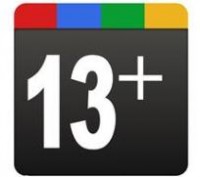 Google originally rolled out its Google Plus service only to those with ages 18 and above. Recently the search giant has announced that it is now opening the service to the thirteen years old and up market.
Google originally rolled out its Google Plus service only to those with ages 18 and above. Recently the search giant has announced that it is now opening the service to the thirteen years old and up market.
Since this is a pretty sensitive market to cater with all the understandable apprehensions by parents in trying to protect their teenagers from potential dangers lurking in the internet, Google has simultaneously rolled out new privacy and security features which should somewhat assuage the parents into letting their kids try out the service.
Apparently, this new development is part of Google’s overall rollout plan for their Google Plus; this being the third or fourth installment in a series and with each rollout followed by some announcement of their membership figures.
The Lucrative Teen Market
As far as membership is concerned, experts anticipate millions of teenagers to be signing up for the service in the very near future. This should be a salivating prospect for brands and marketers who are targeting this particular demographic and are looking for a specific channel to get their message through.
Youth-oriented brands that will be able to utilize digital tools which appeals to teenagers such as music videos, movie trailers, games, mobile applications, or social networking sites can certainly tap into this captured market. Teenagers make up the most dynamic and fanatic base but are especially susceptible to social activities having been weaned on daily diets of mobile devices, Facebook, Twitter, etc.
New Security Enhancements for Google Plus
In relation to this expanded rollout, Google has also simultaneously implemented these new security enhancements aimed at protecting the teenagers:
- Teenagers can only interact with those who are listed in their circles. This means that it’s not possible for them to receive any notification or greetings from practical strangers. The only way for a person outside of their circle to interact with them is if an existing member will add those people into their circle.
- By default, if a stranger happens to stumble into a Google Plus Hangout which has a teenager already in the conversation, the teenager will be automatically removed from the video chat – with an option to rejoin the group once it’s been established that there’s no imminent danger. This way, the Hangouts can’t be used as tools for immoral purposes by some shady characters.
- Google Plus will issue warnings to teen users every time they are about to post something to the general public, meaning those that are outside their circle, before they can share.
- There’s also the Google Plus Safety Center which carries all sorts of information and instructions as to how you can set up your Google Plus for security and privacy purposes.
Takeaway
The teenager market is one of the most desirable markets to penetrate for advertisers and marketers. Google is obviously doing a very smart thing in this recent attempt to corner a big chunk of this powerful and influential demographic with the introduction of their Google Plus to those with ages thirteen and above. The enhancements in privacy and security settings are also especially helpful in order to convince parents to let their children try out this new service.
George Peterson currently works for one of the leading search marketing agencies in Denmark – Outrider. He currently works as aSEO manager.
